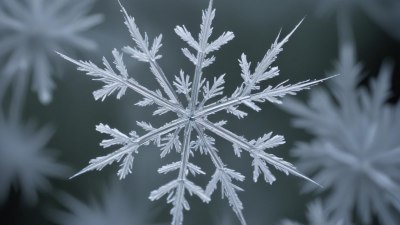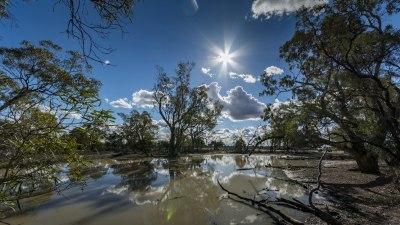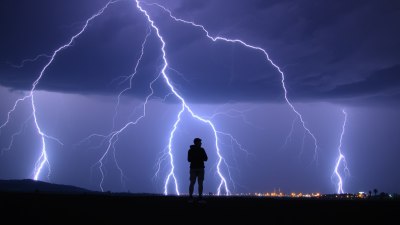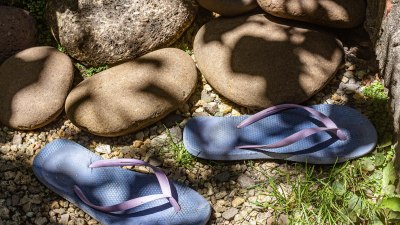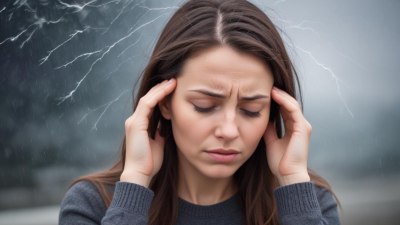How Seasonal Changes Affect Sleep and Energy Levels
Explore the impact of seasonal changes on sleep patterns and energy levels for a healthier lifestyle.

This image was created with the assistance of Freepik
Seasonal changes greatly influence human physiology, including sleep patterns and energy levels, which can vary significantly depending on the time of year. Understanding these changes can help individuals manage their sleep better, optimize their daily energy levels, and enhance overall well-being. This article delves into the various ways seasons affect sleep and energy, providing insights into biological, psychological, and environmental factors.
Biological Rhythms
The human body follows a natural rhythm known as the circadian rhythm, which is influenced by light exposure. As seasons change, so does the length and intensity of daylight, leading to alterations in sleep-wake cycles. During longer summer days, increased light exposure can lead to extended wakefulness and altered sleep patterns, while shorter winter days may result in increased melatonin production, causing feelings of sleepiness earlier in the evening.
Seasonal Affective Disorder (SAD)
One of the most notable impacts of seasonal changes on sleep and energy is seen in Seasonal Affective Disorder (SAD), a type of depression that occurs at specific times of the year, typically during winter. Individuals with SAD may experience extreme fatigue, increased sleepiness, and difficulty waking up in the morning, all of which can severely affect energy levels.During the winter months, lower levels of sunlight can lead to increased melatonin production, affecting sleep quality and duration. As a result, people with SAD often report sleeping excessively but still feel tired and lethargic.
Summer Sleep Challenges
Conversely, summer brings unique sleep challenges. The heat and humidity can make it difficult to achieve restful sleep. Higher temperatures can lead to discomfort at night, prompting disruptions in sleep patterns. Additionally, the longer daylight hours in summer may cause people to stay up later, reducing the overall amount of sleep they receive. The combination of these factors can lead to increased irritability and decreased energy levels during the day.
Effects of Daylight Saving Time
Daylight Saving Time (DST), which results in clock changes in spring and fall, can disrupt established sleep patterns for many individuals. The transition into DST in the spring often leads to an hour of lost sleep, which can result in decreased alertness and energy levels during the following days. Following the fall transition, when clocks are set back, some individuals may experience an increase in sleep duration but also struggle to adjust their schedules accordingly, leading to temporary changes in energy levels. These transitions emphasize the importance of gradually adjusting sleep schedules in anticipation of time changes.
Nutrition and Seasonal Diet Changes
Another aspect that affects sleep and energy levels with the seasons is nutrition. Seasonal foods can impact overall health and energy. In the winter months, people may gravitate toward heavier, carbohydrate-rich foods which can lead to feelings of sluggishness and lethargy. In contrast, summer encourages a diet rich in fruits and vegetables, which can contribute to better hydration and vitality. The impact of food choices on sleep is significant; certain foods may promote better sleep quality, while others might interfere with it. A balanced diet, adjusted according to seasonal availability, can help stabilize energy levels throughout the year.
Physical Activity Levels
Seasonal changes also affect levels of physical activity, which in turn influences sleep and energy levels. Longer days in the summer often encourage outdoor activities, increasing overall physical engagement and potentially improving sleep quality due to higher levels of exertion. Conversely, winter months may lead to decreased levels of physical activity due to colder temperatures, which can negatively affect sleep quality and energy levels. Establishing a consistent exercise routine, regardless of the season, can help alleviate some of these imbalances.
Temperature and Sleep Quality
The ambient temperature also plays a critical role in sleep quality. Studies indicate that most individuals sleep best in a cooler environment, typically around 60 to 67 degrees Fahrenheit (15 to 19 degrees Celsius). During the hot summer months, high temperatures can lead to restless nights and exacerbated sleep issues, reducing overall sleep quality and leaving individuals feeling tired the next day. Conversely, winter may bring a drop in temperature that creates a cozy atmosphere for sleep, as long as the sleeping environment is adequately warmed.
Light Exposure and Mental Health
Light exposure is crucial for regulating sleep cycles and maintaining mental health. The reduced exposure to sunlight during the winter months can lead to feelings of sadness or lethargy, impacting sleep. Conversely, greater light exposure in summer can elevate mood and energy levels, sometimes causing an inability to settle down for sleep. Finding balance through light exposure—using bright light therapy during darker months or managing light exposure at night during summer—can help mediate these seasonal effects.
Coping Strategies for Seasonal Sleep Issues
Several strategies can help individuals cope with sleep disturbances caused by seasonal changes. Maintaining a consistent sleep schedule, regardless of external changes, can help stabilize circadian rhythms. Engaging in light therapy during winter months can alleviate some symptoms of SAD and boost mood. Additionally, keeping an eye on diet, physical activity, and even temperature control in the sleeping environment can lead to substantial improvements in both sleep quality and energy levels.
The Importance of Sleep Hygiene
Ultimately, sleep hygiene is a foundational element that influences the interplay between seasonal changes and sleep. Establishing a bedtime routine that promotes relaxation—such as reducing screen time before bed, creating a comfortable sleep environment, and using relaxation techniques—can enhance sleep quality. In addition, remaining mindful of caffeine and alcohol consumption as seasons change can promote better sleep, as these substances significantly affect sleep quality and duration.
In conclusion, seasonal changes have a profound impact on sleep and energy levels. Understanding these seasonal effects allows individuals to take preventive steps to mitigate disturbances in sleep patterns and optimize energy levels throughout the year. By being aware of the various factors that influence sleep and adjusting habits accordingly, individuals can enhance their overall well-being and adapt to the changing seasons with greater ease.

